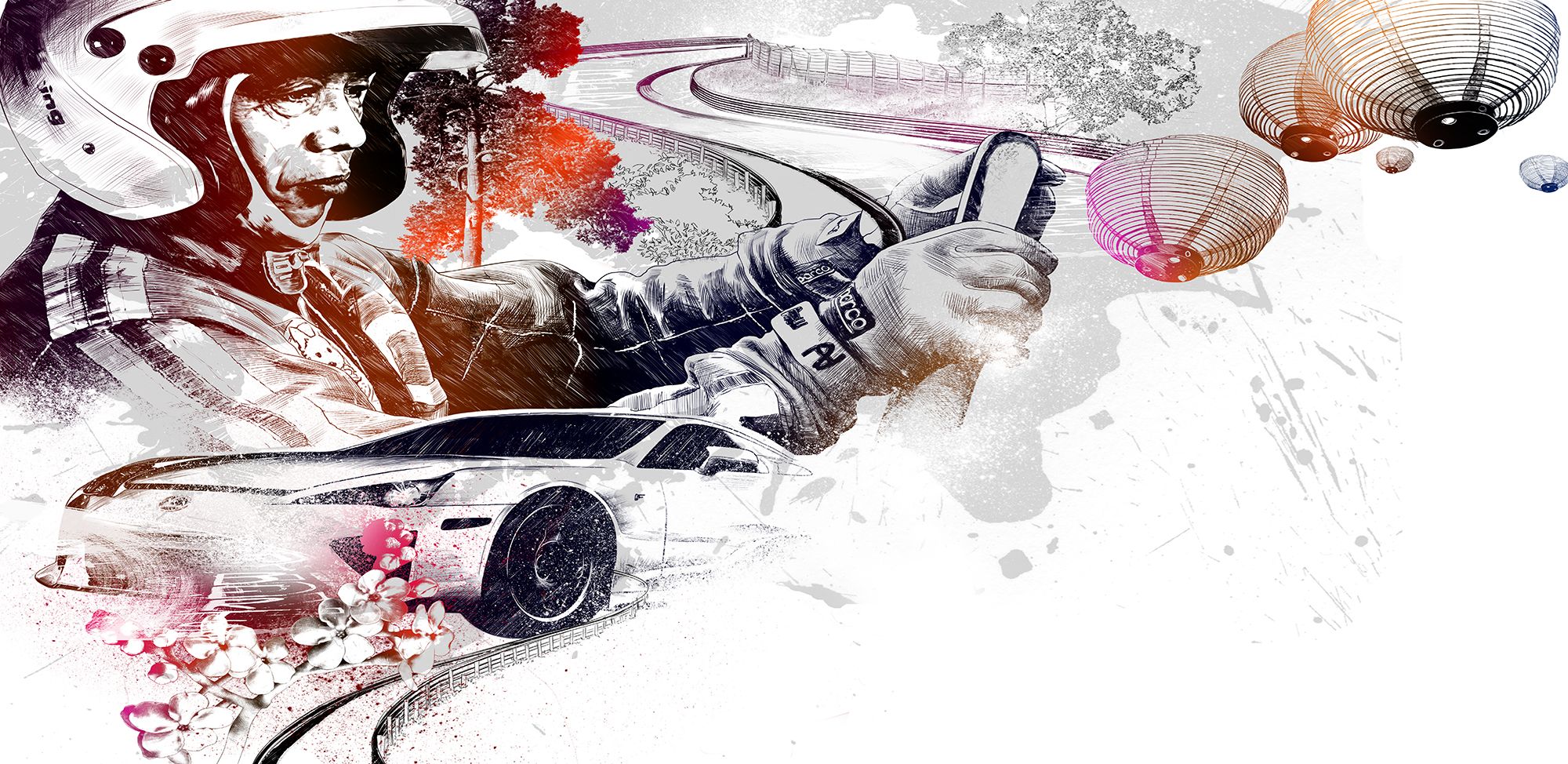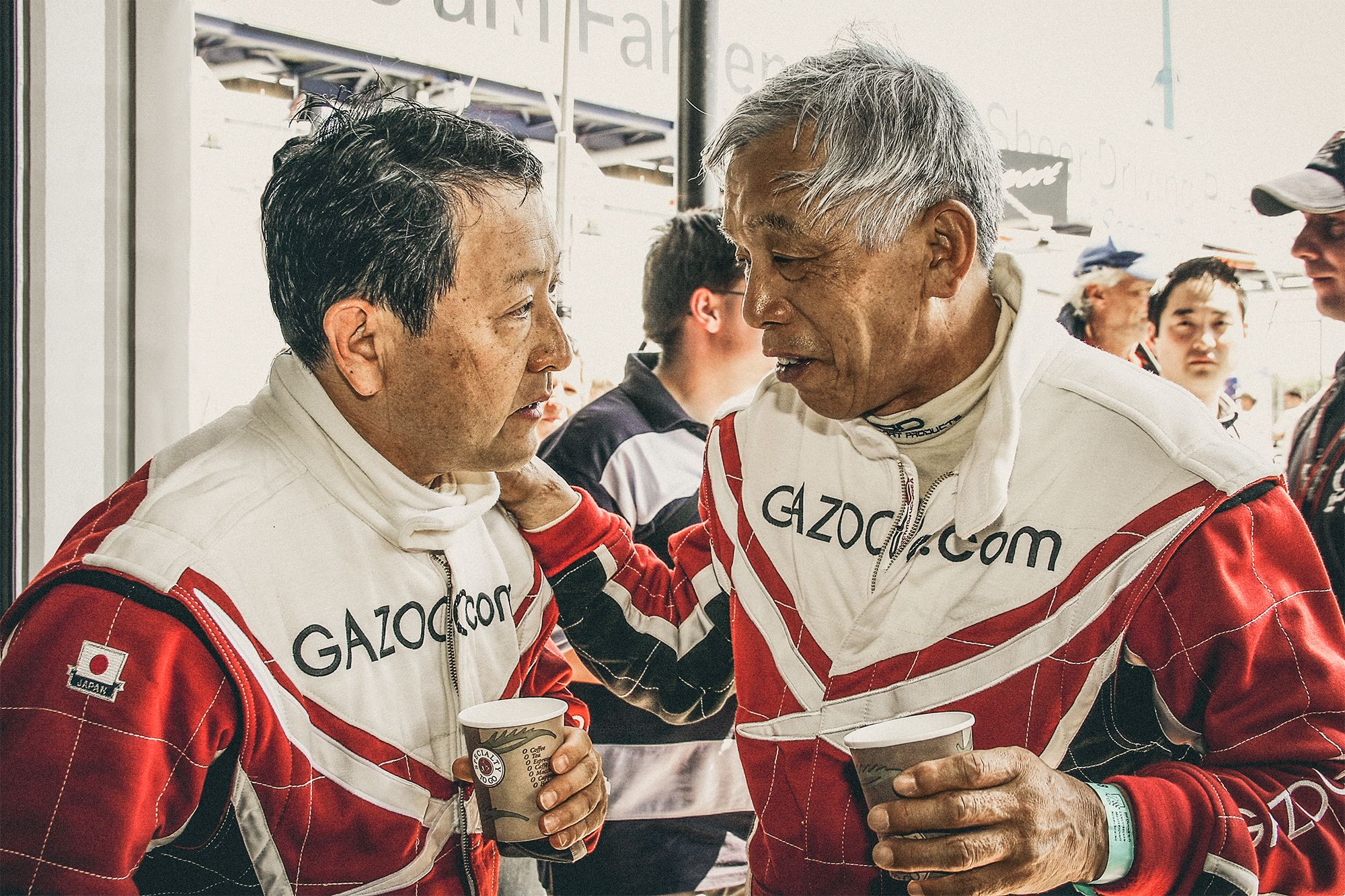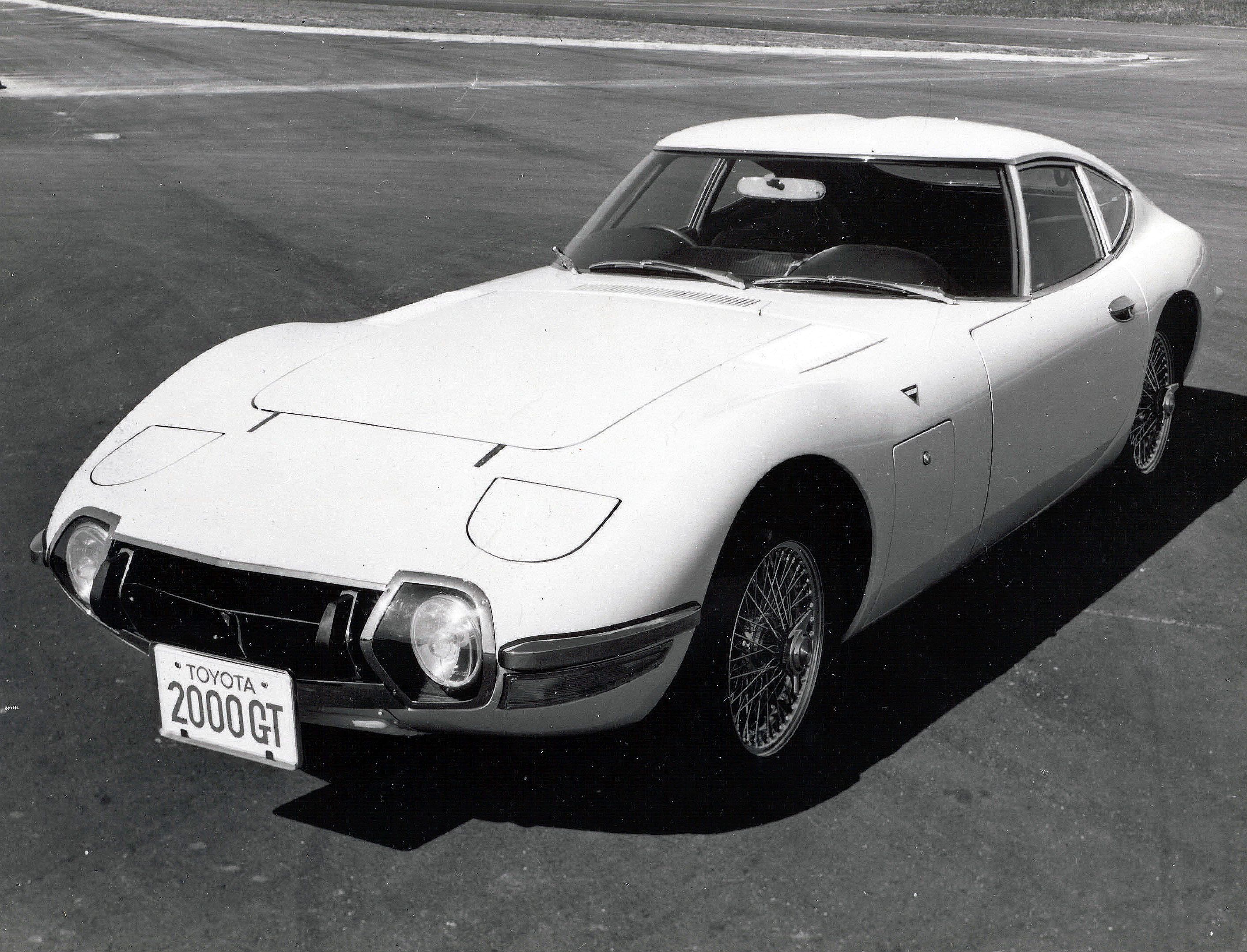gymratter
Well-Known Member
- Thread starter
- #1
Test driver Hiromu Naruse was a legend who influenced half a century of Toyota history. But with his crowning achievement came tragedy.


THE DAMPERS NEEDED ONE MORE CHECK.
The dampers always needed one more check. It was midmorning on June 23, 2010, and Toyota’s most senior test driver had just completed another lap of the Nürburgring in a Lexus LFA. In his 47 years at the company, Hiromu Naruse had accumulated the most Nürburgring laps of any Japanese driver, and it all led to the LFA he was driving, his life’s work.
After 10 years of development, Naruse was finally, visibly pleased. The car he was driving, an orange LFA Nürburgring Package, had more power than the standard LFA, plus a fixed rear wing and a more focused suspension. Naruse had been involved with many of Toyota’s legendary performance models, but he had never shown such delight in a vehicle—not the AE86, the Celica, nor the MR2. Not even the Supra.
Naruse turned to test driver Yoshinobu Katsumata, sitting in the passenger seat. The car was almost ready, he said. The closest Naruse had ever come to achieving his dream—building a car that could topple the best from Europe on their own turf. Naruse asked Katsumata if he wanted to take the wheel. Katsumata hesitated—he’d tested vehicles with Naruse for years and only drove when the car was nearly complete. There was still another week of testing on the schedule. Katsumata politely declined and stepped out of the car. Assistants began to clean the Toyota garage, preparing for the next test session. This far into the program, their movements were familiar, almost rote.
Naruse and a small team of engineers had constructed a supercar lifted straight from his personal tastes, shaped over decades of study and relentless tinkering. But the dampers needed one more check. Naruse prepared to leave, to go back to Toyota’s nearby engineering facility. An assistant normally rode along on these drives, but Naruse told his colleagues not to call for that man. “I’ll just drive back alone,” he said.
The drive was less than two miles. He’d driven it hundreds of times. Naruse pushed a helmet over his flattened white hair, rolled up the window, and pulled onto the highway.

I LEARNED ABOUT HIROMU NARUSE the way most people did: from the news reports when his LFA didn’t make it back. Photos of the crumpled supercar flooded the internet. There were a few days of tribute. Toyota published a video in remembrance.
Once mired in obscurity, test drivers have become minor celebrities of late. There is no shortage of stories about people like Walter Röhrl at Porsche or Lamborghini’s Valentino Balboni. Even Nissan’s chief driver, Hiroyoshi Kato, has a public profile and a devoted following. All of which makes sense—who wouldn’t want to watch the masters, creators of the world’s most impressive machines, at the top of their craft?
Yet here was a driver who had spent nearly half a century with one company. And not some niche automaker, but Toyota, one of the largest in the world. Naruse climbed that company’s ranks to lead a global team of test drivers. His fingerprints could be traced across Toyota’s history of performance cars: the Sports 800, the 1600GT, the 2000GT, the AE86 Sprinter Trueno. The Corona, the Celica, the MR2, the Supra, the Altezza (our Lexus IS), the MR-S (MR2 Spyder). His legacy spanned decades, woven through the history of the modern fast car.
Naruse’s story, however, was harder to find.
To chase it, I went to Japan. I wanted to see where Naruse-san built a legend. I wanted to meet the people with whom he sweated under drivetrains and debated suspension design. At Toyota’s sprawling corporate headquarters, in Toyota City, the story began to appear.
“He was a driving doctor,” said Katsumata, the Chief Expert driver who had been at Naruse’s side on the day of the accident. Seated across from me at a walnut conference table, Katsumata had a kind, round face and unruly black hair. He spoke with the gravitas that comes with 44 years in an industry. Our interview kicked off a series of meetings with Toyota employees, all of whom were wary of giving too much credit to any one person. Everything was described as a team effort, reflective of a corporate culture where drawing attention to oneself is discouraged. That could explain why Naruse never gained as much public acclaim as some of his peers. But after a few questions, without fail, each of Naruse’s associates began to open up about the man they called the Master.
“The way Naruse drives was completely different,” Katsumata said. “You can see he’s talking with the four tires; he’s having a dialogue. He would truly understand the characteristics of the tires.”
In a department of car nuts, Naruse stood out. “Mr. Naruse was always saying that we should stay under the vehicle forever,” said Toshiyuki Sekiya. At age 25, Sekiya was pulled into Naruse’s orbit during development of the Celsior (sold in America as the Lexus LS). “We should think only about the vehicle [Naruse told the crew] for one month long, and never think about anything else. During dinner, we were talking about the vehicle only.”

The philosophy dated back to Naruse’s early days with Toyota. He came aboard in 1963, as a temporary mechanic, smack in a golden age of Japanese motorsport. Naruse was assigned to Toyota’s Engineering Department No. 7, the dedicated motorsport group that had developed the 2000GT in the mid-1960s, in near secrecy. It was as close to a skunkworks as Toyota has ever had. A few years later came the Toyota 7 race car—akin to a Can-Am car, and one of the company’s early experiments with racing prototypes. Naruse tested it around short courses a stone’s throw from the conference room where I conducted interviews.
Department bosses back then would bark orders from behind their desks with little explanation, leaving the engineers to figure out solutions themselves. Perhaps as a result, Naruse developed a habit of constant tinkering that followed him throughout his career. He rarely left the work site. This idea, known as Genchi Genbutsu, is one of Toyota’s famed 12 business principles. It means, loosely, “Go and see for yourself.”
“He was always touching the vehicle,” said development leader Hiroyuki Koba. That led to an innate understanding of vehicle behavior and dynamics that became second nature. “Naruse said on the shop floor [that] if you attach reinforcement material here, then the movement of the vehicle would dramatically change, and you can grasp how the car will move.”
Department No. 7 was shut down in 1973, and its members dispersed across the company. Naruse was assigned to vehicle development, where his legacy would take root.

NARUSE CONSTANTLY DEMANDED CHANGES, even when others deemed it too late in the production cycle. He often made these changes himself, without telling anyone. Engineers would work on parts only to later realize that they were outdated, because Naruse had changed those parts in the middle of the night. “He wanted to do things by himself,” Sekiya said. Six months before the 2009 Avensis sedan debuted, for example, Naruse demanded that the car’s ride height change. Koba, who was the project manager, complained that it was too late. “Many design changes were necessary,” he said, “and if we make changes, we have to redo reliability evaluations. It was a lot of work to do in that limited time.”
Naruse insisted.
“We worked very hard to fulfill that request,” Koba said. Naruse was able to make taxing demands in part because his colleagues respected his dedication. He had no hobbies, did not smoke or drink, and worked hard enough to leave an impression on others. Engineer Hironori Adachi told me that Naruse liked to cook but confessed he’d never witnessed it. Then he said Naruse often ate plain tofu without seasoning. The most consistent complaint about Naruse, either as a man or as an employee, was that he would eat the same meal, at the same restaurant, three times a day, for weeks at a time. “He didn’t challenge new food,” Toyota Grand Master driver Nobuaki Kanamori described it. Ironically, one of the philosophies that Naruse drilled into Toyota engineers was the need to develop the “flavor” of a car. He believed Toyota’s distinct engineering should be recognizable throughout the company’s lineup, via characteristics like steering feel, responsiveness, and composure. These were the ingredients that could be adjusted, within a larger broth, to suit individual tastes. And if those flavors were to come alive, the broth itself had to be good.
“What I focused on was the base of the car,” said Minoru Takaki, a Naruse disciple who is now a Grand Expert test driver. “It’s important that first, the car can drive very smoothly and stably. If you can keep those features, then you can go on next and make the flavor.”

To fine-tune that flavor, Naruse sometimes pushed his teams to their limits. They would spend hours running prototypes around Toyota’s short course, under the baking sun, then wheel them straight into the vehicle-testing division, hidden at the back of the company’s campus.
Toyota representatives invited me to tour that facility, but not before asking me to leave my camera and phone behind. Even employees need special clearance to enter. Today, the unassuming sheetmetal warehouse is a modernized facility with open work spaces and glossy cement flooring. The clank of metal and the whir of impact wrenches fill the air as mechanics tinker. One corner is stuffed with freshly buffed, race-prepped Toyota 86s huddled in a flock. But years ago, the building was stifling and windowless, essentially a glorified shed. Naruse practically lived on the shop floor. Adachi said Naruse would stalk engineers in the upstairs cubicles. “He [would say], ‘Why are you sticking to your desks in the office? Why do you not touch the vehicles more often?’ ”
A typical day might consist of extensive high-stress testing of a new model. Takaki described how the team would push the car directly from the searing track into a walled-off section the size of a shipping container. A flimsy canvas gate slid closed for privacy. When we visited, a young mechanic was there, under the hood of a Lexus IS. I had to watch my feet to make sure I didn’t kick the bumpers, wheels, and other parts piled high against each wall. The three of us barely fit in the space.
Takaki said Naruse and his team spent hours in this area, with no air-conditioning. During smothering Japanese summers, Naruse would lie on metal plates underneath cars to take apart still-glowing brakes or to demonstrate where a suspension needed reinforcement. The rest of the team—sweating in jumpsuits, longing to be released—looked on and took notes. Takaki had a secret signal to get co-workers to call him away so he could take a bathroom break.
Sponsored




